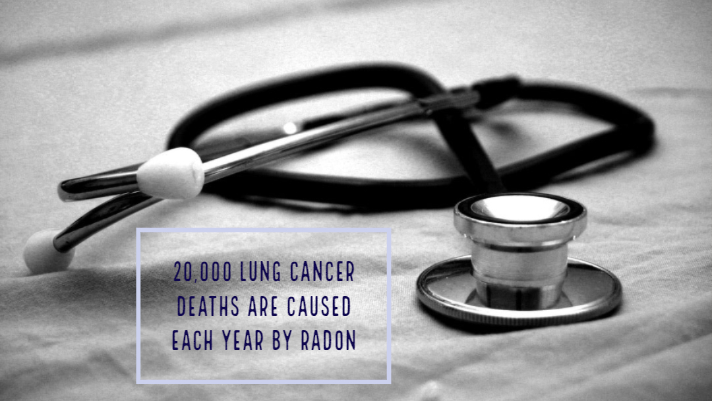Do you know that radon gas is the second leading cause of lung cancer in the United States today? In addition, the U.S. Environmental Protection Agency and the Surgeon General’s Office have estimated that as many as 20,000 lung cancer deaths are caused each year by radon.
That may leave you wondering this very important question: What is this radon and how can it affect you?
What is radon?
According to the Centers for Disease Control and Prevention, radon is a radioactive gas that forms when radioactive metals like uranium, thorium, or radium break down in the rocks or in the soil beneath your house. These gases radiate through cracks in rocks and sometimes even enter homes and buildings if there are gaps in the house. Since this gas comes from the earth, there is always a possibility of being exposed to it.
How can it affect you?
Since radon gas comes naturally from the earth’s surface, there isn’t much you can do to stop it from emanating. Sadly, this gas is dangerous for you and your family. If you’re exposed to a radon level that is four picocuries or higher per liter, the chances of developing lung cancer are high.
To give you a perspective, a family exposed to four pCi/l is experiencing levels 35 times higher than what would be felt if that family was standing right next to a radioactive waste site. That’s how much it can affect you. The worst part is one in every 15 homes in the U.S has radon levels that are higher than the EPA action level.
Going by these statistics, the chances for your home to have radon gas is moderate to high. A good way to know the presence of this gas is to do a radon testing.
How can you protect yourself from radon gas?
Now that you know all about radon and how it can affect you, it’s time to look at different ways and means to do radon testing and to take the necessary steps to protect yourself and your family from it.
The first step is to use radon testing to estimate the levels of radon gas present in your home. You can purchase a radon testing kit and follow the instructions on it to test the prevailing levels. A better option is to take the services of a local radon mitigation and abatement company as they can give you precise results and can also make appropriate recommendations about how to improve radon test results.
If the radon gas is more than the recommended levels, here are some simple steps you can take for radon mitigation:
- Increase airflow in your home by opening windows when the weather is good. Consider using fans and vents as well for improved air circulation.
- Look for cracks on the floor and seal them with the right materials.
- If you’re buying a new home, check if it uses radon-resistant construction techniques.
- Avoid using exhaust fans as they tend to increase radon circulation inside the house.
- Cover the exposed areas of earth with a polyethylene plastic sheet.
- Use granular activated carbon filters.
While all of these may work at varying levels, your best bet is to hire a nationally-certified radon mitigation company like Affordable Radon. They are specialists in radon testing and abatement and offer a wide range of services such as radon system inspections, vapor barrier crawl space sealing, radon abatement and mitigation services, sump pump installations, sump pit excavations, and more.
Reach out to them right away to know and reduce the radon levels in your house to safeguard the health of your family.


Recent Comments